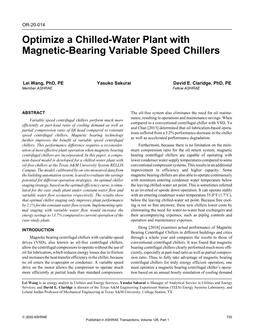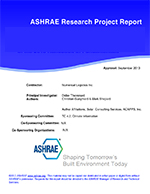Problem Statement Application of the digital computer to engineering problems has become routine. Use of a computer to perform energy analysis calculations began over a decade ago, and this application has gained popularity as fuel prices increase and as developments in the field bring this technology within the reach of the design engineer and architect (Ref 1). Building energy analysis on the computer has typically been accomplished by performing an hour-by-hour (typically for 1 yr) simulation of building zones and building energy systems. Ref 2, 3, and 4 describe common simulation algorithms in detail. While modern building energy simulation programs are extremely useful and inexpensive enough to be applied to most design problems, routine application of these tools to optimization studies (where hundreds of options may need to be simulated) or the use of such tools on modern mini- or micro-computers appears impractical. “Hand checking” of the many calculations performed in hour-by-hour analysis programs is also difficult. For these reasons, a much simpler procedure for estimating annual energy use in buildings is desirable. Ideally, such a procedure should be simple enough to be performed by hand (even though its automation would be likely) and nearly as accurate as hour-by-hour methods. In terms of accuracy, any new method should at least maintain the rank order and relative difference between building system designoptions.
Citation: ASHRAE Transactions, Volume 85, Part 2, Detroit, MI
Product Details
- Published:
- 1979
- Number of Pages:
- 23
- File Size:
- 1 file , 840 KB
- Product Code(s):
- D-DE-2538


